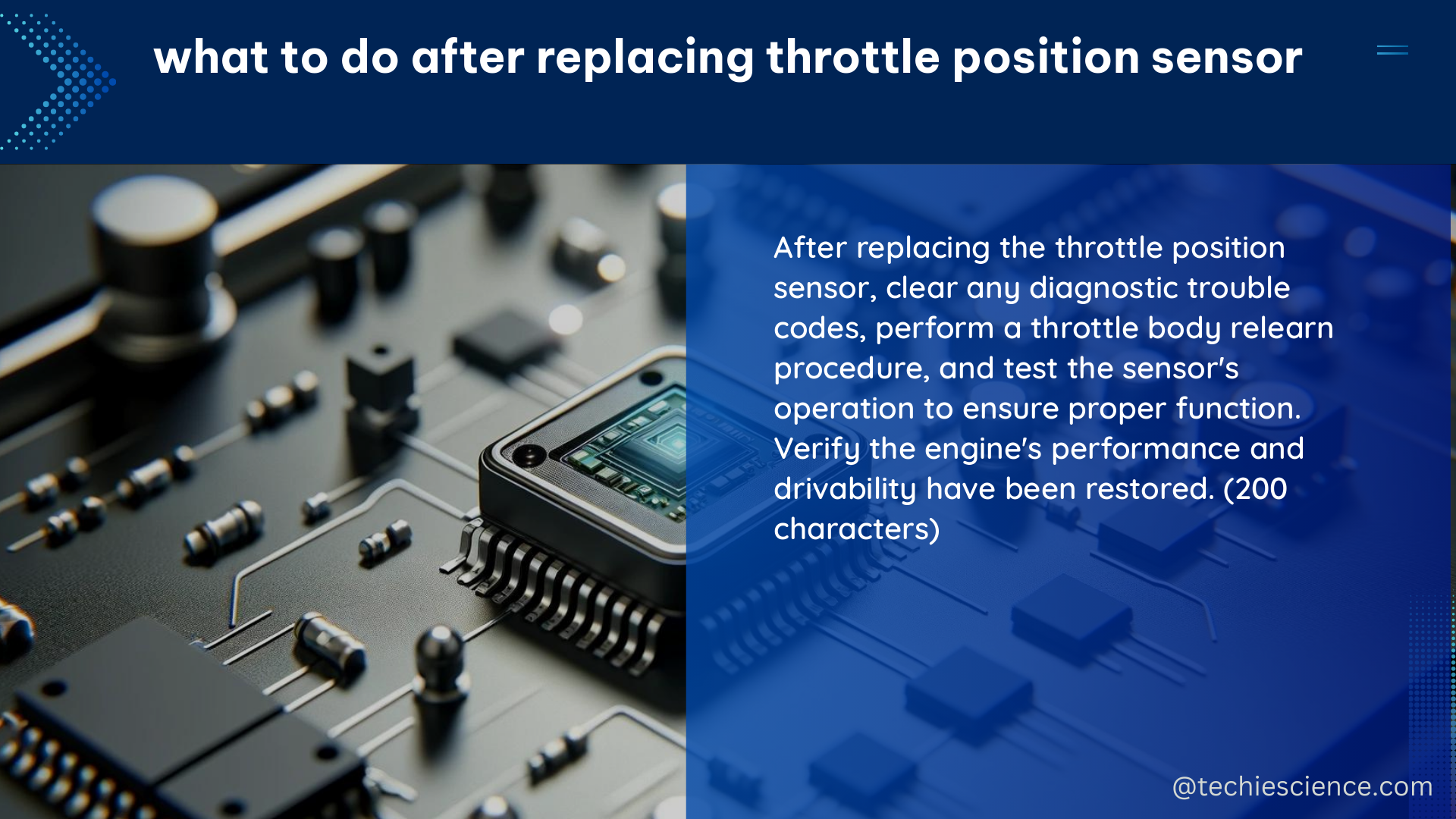After replacing the throttle position sensor (TPS) in your vehicle, it’s crucial to follow a series of steps to ensure the proper functioning of your engine management system. This comprehensive guide will provide you with detailed instructions, technical specifications, and valuable resources to help you navigate the process seamlessly.
Locate the Throttle Position Sensor
The throttle position sensor is typically located on the throttle body, which is connected to the air intake system. This sensor monitors the position of the throttle valve, which controls the amount of air entering the engine. The sensor is usually secured with screws or bolts and has an electrical connector that needs to be unplugged during the replacement process.
Disconnect the Battery

Before you begin working on the throttle position sensor, it’s essential to disconnect the negative terminal of the vehicle’s battery. This step is crucial to prevent any electrical accidents or damage to the vehicle’s electrical components.
Remove the Old Throttle Position Sensor
To remove the old throttle position sensor, follow these steps:
- Unplug the electrical connector from the sensor.
- Remove the screws or bolts that are holding the sensor in place.
- Carefully pull the sensor out of its housing, taking note of its orientation and position.
Install the New Throttle Position Sensor
When installing the new throttle position sensor, follow these steps:
- Position the new sensor in the same location as the old one, ensuring that it is properly aligned.
- Secure the sensor with the screws or bolts, tightening them to the manufacturer’s specified torque values.
- Reconnect the electrical connector, making sure it is properly aligned and fully seated.
Perform a Sensor Self-Test (if applicable)
Some vehicles have a built-in self-test function for the throttle position sensor. Refer to your vehicle’s service manual for the specific procedure to perform this test. The self-test can help you verify the proper functioning of the new sensor.
Clear Any Trouble Codes
If the vehicle’s engine control unit (ECU) has stored any trouble codes related to the throttle position sensor, use a diagnostic tool to clear them. This will ensure that the ECU is not still trying to compensate for the old sensor.
Test the Throttle Position Sensor
After installing the new throttle position sensor, start the vehicle and let it idle for a few minutes. Then, gently press the accelerator pedal and observe the sensor’s readings on the diagnostic tool. The readings should correspond to the throttle position and fall within the manufacturer’s specified range.
Throttle Position Sensor Specifications
When testing the throttle position sensor, consider the following technical specifications:
| Specification | Typical Range |
|---|---|
| Resistance | 500 to 2000 ohms |
| Voltage | 4.5 to 5.5 volts |
| Ground | Good connection to vehicle chassis |
Check for Proper Engine Operation
Take the vehicle for a test drive and monitor its performance. Pay attention to any unusual noises, vibrations, or hesitations, which could indicate issues with the throttle position sensor or other components. If everything appears to be functioning correctly, the replacement process is complete.
Additional Resources
For further information and detailed procedures, consult your vehicle’s service manual or the following resources:
By following these steps and adhering to the technical specifications, you can ensure that your vehicle’s engine management system is functioning correctly after replacing the throttle position sensor. Remember to always consult your vehicle’s service manual for the most up-to-date and manufacturer-specific instructions.
Reference:
1. MIL-STD-881F – CADE
2. HELLA – Check and change ABS sensor
3. Emerson – Control Valve Handbook

The lambdageeks.com Core SME Team is a group of experienced subject matter experts from diverse scientific and technical fields including Physics, Chemistry, Technology,Electronics & Electrical Engineering, Automotive, Mechanical Engineering. Our team collaborates to create high-quality, well-researched articles on a wide range of science and technology topics for the lambdageeks.com website.
All Our Senior SME are having more than 7 Years of experience in the respective fields . They are either Working Industry Professionals or assocaited With different Universities. Refer Our Authors Page to get to know About our Core SMEs.